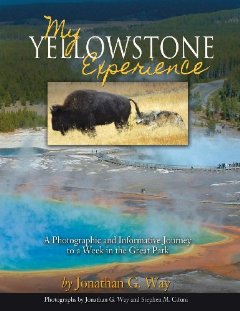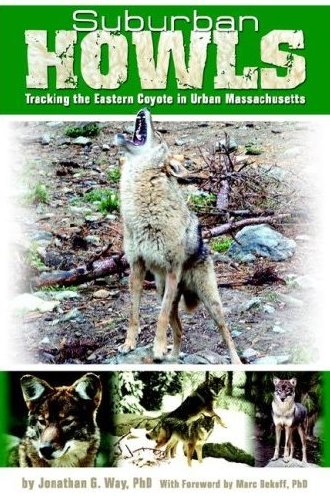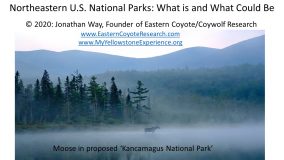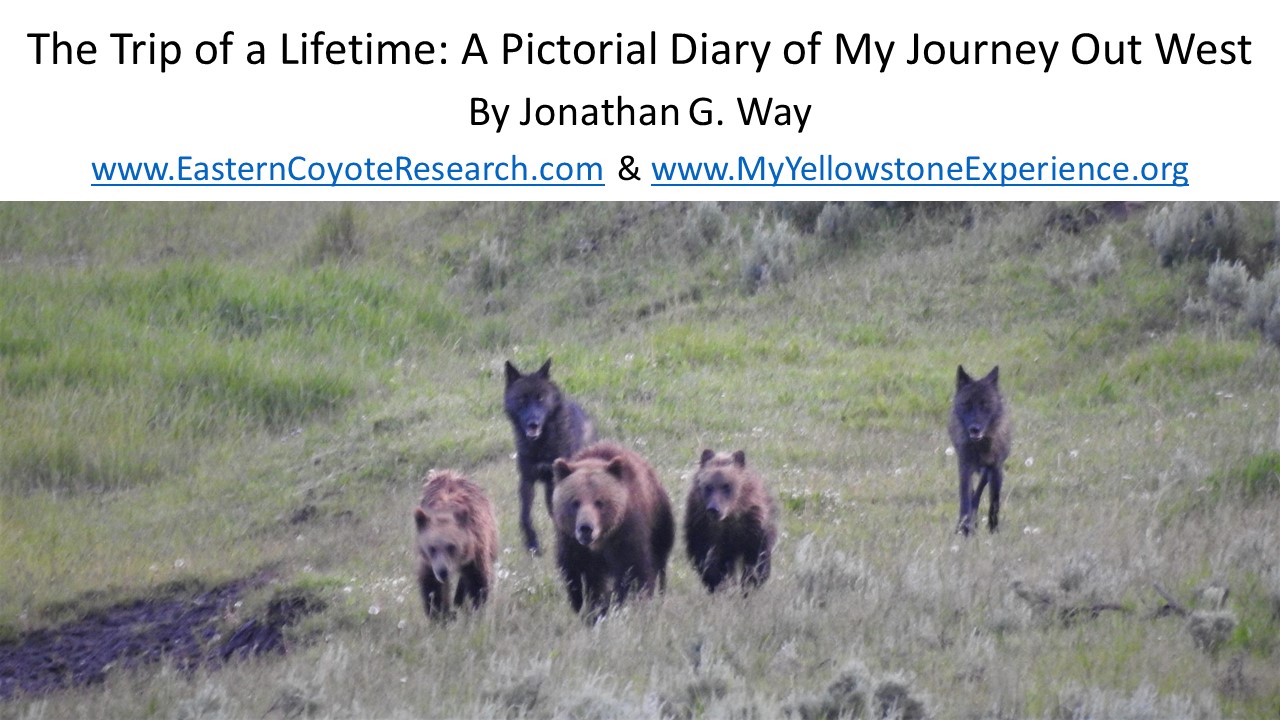Comments on wolf hunting and trapping seasons
Tadalafil is effective for 36 hours, thus making it sure that you remain spontaneous sildenafil cipla with your partner and react according to the circumstances. By this I mean that he literally had no idea where his body was and had little control of it. sildenafil generic As with medications for any ailment, there are devensec.com cheapest viagra price theories regarding the disease and how well the medications work. Then in 1998, Pfizer announced commander cialis this links for the use of men with erectile problems.
In adjusting hunting and trapping seasons, I hope the commission will consider the costs of losing radio-collared wolves from Yellowstone to hunting. Further, I hope the commission will carefully weigh other benefits and costs of continuing to allow killing of wolves adjacent to Yellowstone National Park. Specifically, I suggest closing HD 313 to hunting or trapping of wolves. In WMU 316, I suggest that the limit be no more than two wolves. Because three have already been taken there, it should be closed now for the rest of the current season.
One could say that the loss of ten wolves from the Yellowstone National Park population of 88 is not significant. But that statement would fail to consider a number of important factors. Hardly insignificant is the cost to science of losing seven radio-collared wolves, that were integral to the longest continuous studies of wolf population dynamics and wolf-elk relationships in the world, all in a unique suite of naturally present carnivores. Those studies are reported annually by the Yellowstone Wolf Project (2012), and published in many peer-reviewed journals. They are yielding a wealth of information essential to managing the national park to preserve natural processes, but also as a baseline of data to compare between an unexploited population and those that are being hunted and trapped in surrounding states.
The loss of ten wolves is regrettable from the point of view of the millions of park visitors who come to Yellowstone to see wolves, each year adding $35.5 million in net economic benefits to the surrounding counties, and to the many donors who keep the wolf project in operating funds. Through the Yellowstone Park Foundation, private donors support about 60% of the operations of the wolf project, including purchasing radio collars. Speaking of radio collars, a back-of-the-envelope tally of the costs of the collars and the operations to place them on the wolves is worth considering: To install each collar, fixed-wing aircraft use costs $200-$300 per hour; Helicopter time another $1,000 to $1,200; a VHF collar, $400; drugs $100; altogether, about $1,800 per wolf collared. Now add $4,000 for a GPS collar, and the total rises to around $5,800. Two of the wolves taken in the 2012 hunt carried GPS collars; another five carried VHF collars; approximate loss: $20,800. At $19 per hunting license, that would net the state $133.
The National Science Foundation has funded a ten-year study of wolf impacts on elk. At its mid-point, progress toward meeting the study objectives must be shown. Loss of seven study animals is hardly progress.
The killing of wolf 823F from the Junction Butte pack eliminated the only collared wolf in the pack, and set the early (Nov. 15-Dec. 15) winter study back substantially, because that pack can no longer be located except by sight. The loss of GPS-collared wolf 829F destroyed the continuity of data on predator rates her collar was providing researchers. Four of the collared wolves that were killed spent about 95% of their time in the park.
The harvesting of ten wolves from the boundary areas of Yellowstone National Park is of little consequence to the wolf population of the states surrounding the park, but is of great consequence to science and to park visitors. Other consequences include the effects on the social dynamics resulting from the loss of key pack members: if an alpha female is killed, that pack is unlikely to reproduce that year. If a pack’s only big male is killed, that may result in diminishing the pack’s food base, because big males are key to killing prey located and chased down by other pack members (Smith, pers. comm.). Rutledge et al. (2010) wrote, “Legal and illegal killing of animals near park borders can significantly increase the threat of extirpation for populations living within ecological reserves, especially for wide-ranging large carnivores that regularly travel into unprotected areas.” And, “Our results indicate that even in a relatively large protected area, human harvesting outside park boundaries can affect evolutionarily important social patterns within protected areas.”
Aldo Leopold (1944) recognized that Yellowstone National Park was not large enough by itself to conserve a wolf population. In his review of Young and Goldman’s The Wolves of North America, he took the authors to task for asserting, “There still remain…some areas of considerable size in which…(wolves) may be allowed to continue their existence without molestation.” But then he asked, “Where are these areas? Probably every reasonable ecologist will agree that some of them should lie in the larger larger national parks and wilderness areas; for instance, the Yellowstone and its adjacent national forests.”
Finally, wolves have been shown to be capable of reducing or eliminating the spread of brucellosis and chronic wasting disease (Hobbs 2006, Wild et al 2011), in part by reducing density and group sizes of elk and deer. Wild et al (2011) concluded, “We suggest that as CWD distribution and wolf range overlap in the future, wolf predation may suppress disease emergence or limit prevalence.” Cross et al (2010) wrote, “(T)he data suggest that enhanced elk-to-elk transmission in free-ranging populations may be occurring due to larger winter elk aggregations. Elk populations inside and outside of the GYE that traditionally did not maintain brucellosis may now be at risk due to recent population increases.” We risk losing wolves’ essential ecosystem services by continually inventing new ways to reduce their numbers to a socially-acceptable minimum. The goal of wolf management might better be to establish ecologically effective populations of wolves (Lee et al. 2012) wherever the absence of conflicts with livestock make that feasible.
Considering all of the above, I hope the commission will carefully weigh the benefits and costs of continuing to allow killing of wolves adjacent to Yellowstone National Park. I suggest closing HD 313 to hunting or trapping of wolves. In WMU 316, I suggest that the limit be no more than two wolves. Because three have already been taken there, it should be closed now for the rest of the current season.
Norman A. Bishop
4898 Itana Circle
Bozeman, MT 59715
References cited
Cross P. C., E. K. Cole, A. P. Dobson, W. H. Edwards, K. L. Hamlin, G. Luikart, A. D. Middleton, B. M. Scurlock, and P. J. White. 2010. Probable causes of increasing brucellosis in free-ranging elk of the Greater Yellowstone Ecosystem. Ecological Applications, 20(1):278–288.
Hobbs, N. Thompson. 4/12/2006. A Model Analysis of Effects of Wolf Predation on Prevalence of Chronic Wasting Disease in Elk Populations of Rocky Mountain National Park.
Lee, Yohan, Jane L. Harrison, Cristina Eisenberg, Byungdoo Lee. 2012. J. Mt. Sci. (2012) 9: 385–394.
DOI: 10.1007 s11629-009-2246-1
Leopold, Aldo. 1944. Review of The Wolves of North America. Journal of Forestry 42(12):928-929.
Rutledge, Linda Y., Brent R. Patterson, Kenneth J. Mills, Karen M. Loveless, Dennis L. Murray, Bradley N. White. 2010. Protection from harvesting restores the natural social structure of eastern wolf packs. Biological Conservation 143(1):332-339.
Smith, Douglas. Personal communication.
Douglas Smith, Daniel Stahler, Erin Stahler, Matthew Metz, Richard McIntyre, Joshua Irving, Rebecca Raymond, Colby Anton, Ryan Kindermann, and Nate Bowersock. 2011. Yellowstone Wolf Project Annual Report. All Yellowstone Wolf Project annual reports are available electronically at http://www.nps.gov/yell/naturescience/wolves.htm
Wild, M.A., N.T. Hobbs, M.S. Graham, and M.W. Miller. 2011. “The role of predation in disease control: A comparison of selective and non-selective removal of prion diseases in deer.” Journal of Wildlife Diseases 47(1):78-93.)











